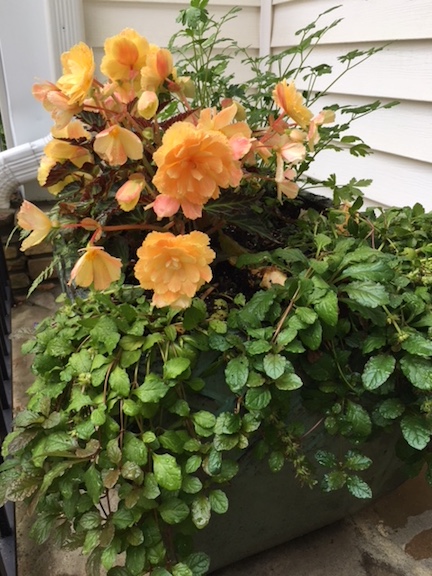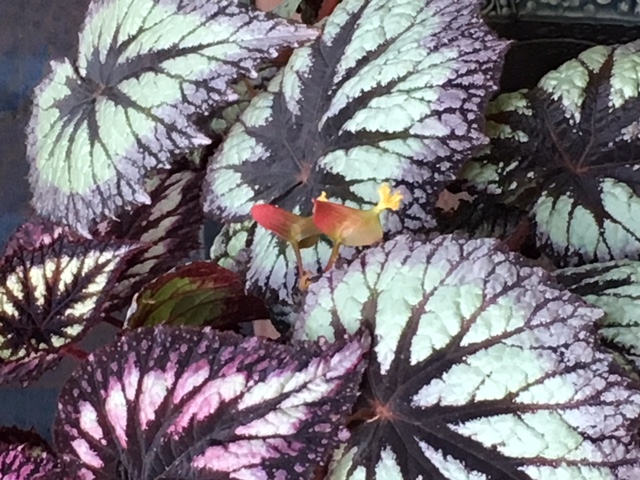In their rush to find out what’s cooking in “LaLa’s Kitchen” my grandchildren rarely take time to notice flowers. So, when 9 year old Ellie commented on the tuberous begonia growing just outside the back door, I was pleased and excited and ran out to buy her her very own tuberous begonia.

I could have started her gardening career with a slightly easier plant. Tuberous begonias are “goldilocks” plants – needing everything just so; not too hot, not too cold, not too sunny, not too shady, not too wet, not too dry. I generally feel as if I don’t really grow these finicky plants as I do to put them in a container and hope that they live as long as possible. So far this year, though, I’ve had pretty good success.

At one point I thought I was losing it as an entire stem looked limp. I quickly watered again, compounding the error as the stem wasn’t dry but was actually rotting from excessive moisture. I brushed the soil away from the base of the main stem, making sure that no stems were resting on the damp dirt and (at least for the moment) problem solved! I amputated the rotting stem but managed to save the main plant.
Begonias make up a mega genus of over 1800 species, not counting the countless hybrids and varieties that have been developed. Most of the species are native to moist subtropical and tropical areas. If you want to grow begonias, mimic their natural habitat which is that of an understory plant. Most thrive in filtered sun, moist soils and warm temperatures. Almost all begonias are perennial but are treated as annuals as they will not tolerate cold or frost.

Begonias make superb bedding plants for shady areas and, if given an occasional shot of organic fertilizer, will bloom from frost to frost. Many of my begonias, such as a stunning “Plum Paisley” I treat as house plants, dragging them outside when the weather warms and back inside when the temperatures cool.

Begonias are very easy to propagate, especially if you just divide them. It’s sort of like growing grass, though, if you fertilize and care for your potted begonias, they’re going to grow so fast you’ll have to divide them frequently, just like fertilizing grass means more mowing.

Will Ellie’s tuberous begonia spiral her into her grandmother’s passion for gardening? I doubt it. But I can always hope.
